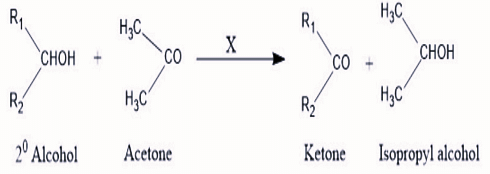Dipole-dipole weak interactions are also called as:
- London forces
- Debye inteactions
- Electrovalent forces
- Keesom forces
The Correct Option is D
Solution and Explanation
To determine what dipole-dipole weak interactions are referred to, let's clarify the different types of intermolecular forces listed in the options and eliminate incorrect ones. The aim is to understand these forces and identify which refers to dipole-dipole interactions.
- London Forces: Also known as dispersion forces, these are weak intermolecular forces arising due to temporary dipoles created due to variations in electron density. They occur in all molecules, but are the only forces present in nonpolar molecules. Thus, they do not specifically refer to dipole-dipole interactions.
- Debye Interactions: These involve interactions between a permanent dipole and an induced dipole. While they involve dipoles, they are not purely dipole-dipole interactions.
- Electrovalent Forces: These are forces resulting from ionic (electrovalent) bonding, involving the electrostatic attraction between cations and anions. This is not related to dipole-dipole interactions.
- Keesom Forces: These are the specific forces between two permanent dipoles, thus accurately describing dipole-dipole interactions.
Upon reviewing the definitions:
The correct answer is "Keesom forces" since they specifically describe interactions between two permanent dipoles, aligning with the description of dipole-dipole weak interactions.
Top Questions on carbonyl compounds
- Which of the following are neutral?
- KEAM - 2025
- Chemistry
- carbonyl compounds
- Acetone can be converted to 2-methylpropan-2-ol using:
- KEAM - 2025
- Chemistry
- carbonyl compounds
- The correct stability order of carbocations is
- JEE Main - 2024
- Chemistry
- carbonyl compounds
- According to Oppenauer Oxidation reaction, oxidation of secondary alcohol to ketone by reagent (X) in acetone takes place, what is "X" :

- GPAT - 2024
- Organic Chemistry
- carbonyl compounds
- The Gattermann-Koch reaction is used in the industrial preparation of benzaldehyde. The electrophile involved in this reaction is
- CUET (UG) - 2024
- Chemistry
- carbonyl compounds
Questions Asked in GPAT exam
- Which of the following alkaloids are found as salts of meconic acid?
- GPAT - 2025
- Introductory Pharmacognosy
Choose the correct match of laxative and its Mechanism of Action (MOA):

- GPAT - 2025
- Laxative
Match the following:
(P) Schedule H
(Q) Schedule G
(R) Schedule P
(S) Schedule F2
Descriptions:
(I) Life period of drugs
(II) Drugs used under RMP
(III) List of Prescription Drugs
(IV) Standards for surgical dressing
- GPAT - 2025
- Drug therapy
- Which of the following is used to evaluate disinfectant?
- GPAT - 2025
- Pathogens
Match the following:
(P) Tuberculosis (1) Bacterial
(Q) Diphtheria (2) Viral
(R) Yellow fever (3) Toxoids
(S) Malaria (4) Protozoal- GPAT - 2025
- Pathogens